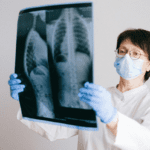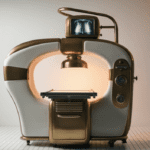Like so many of the technological marvels of medicine, mammograms are underused by or are not available to certain segments of the population who simply lack access to them.
Claudia Stahl, a freelance writer who specializes in writing about the health of people, examined the barriers to accessing mammography experienced by many women throughout the U.S. and the world. Writing for the October 2022 issue of Radiology Today, Stahl detailed many of the barriers to mammography screening and showcased some of the innovative methods healthcare providers have used to overcome barriers and bring mammography services to otherwise underserved populations.
Distance is one of the most significant barriers women face. It was demonstrated shortly after mammography was developed. In 1963, radiologist Philip Strax and his research team set out to screen 62,000 women in New York City as part of a research project.
Most of the participating hospitals were clustered in the north end of the city and the difficult commute from other parts of the city prevented the type of participation the researchers sought.
They solved this problem by equipping a van with an x-ray machine and parking it near office buildings in midtown Manhattan, making it easy for women to get screened during their lunch breaks.
By removing the barrier of distance from the screening process, Strax and his team would eventually demonstrate the relationship between early detection and improved outcomes in breast cancer. Importantly they also invented a screening model-mobile mammography that provides a lifeline to women in rural and urban communities.
Sixty years after Strax’s landmark study, mobile mammography units (MMVs), or mammovans continue to provide screening services, especially to hard-to-reach rural and urban populations.
Since the pandemic, hospitals and mammography screening centers have slowly been closing the gaps in their annual mammography screenings by employing mammovans to reach difficult-to-reach populations.
Additionally, MMVs remove more than the challenge of proximity from the complex mix of factors that influence why, when, and how women access breast cancer screenings. As traveling clinics, they may offer a variety of important services like waived/reduced fees for screenings, onsite follow-up imaging, or help with new appointments or insurance.
Stahl reached out to the Susan G. Komen foundation for additional information on barriers to screening that women face. They list the following barriers.
Barriers to Mammography Screening
- Low income or worry about the cost
- Lack of access to care, such as lack of local or easy-to-get-to mammography
- Lack of a usual healthcare provider
- Lack of recommendation from a health care provider to get mammography screening
- Low education level
- Lack of knowledge of breast cancer risks and screening methods
- Lack of child or elder care
- Lack of sick leave or inability to miss work
- Fear of bad news or pain from a mammogram
- More recent migration to the United States
- Cultural and language differences
Adapted from the Susan G. Komen Foundation.
Thanks to Phillip Strax and his research team for the initial development of the mobile mammography unit today’s hospitals and clinics have a tool to reach hard-to-access patients.
Just as importantly, partnerships have formed to fund and staff organizations whose mission is to bring mammography screening to places in the US and worldwide where access to such services is not readily available. Thanks to the outreach of such partnerships women have improved opportunities to survive the devastation of breast cancer.




